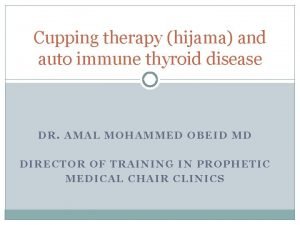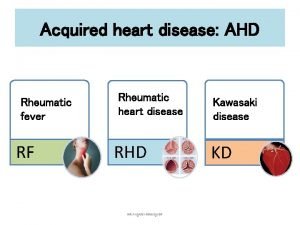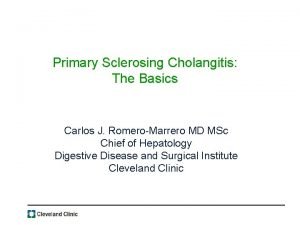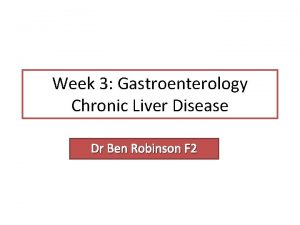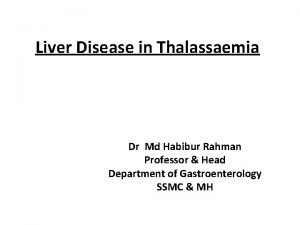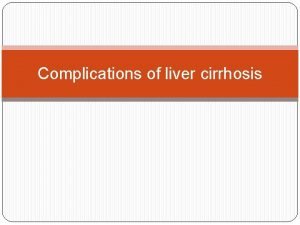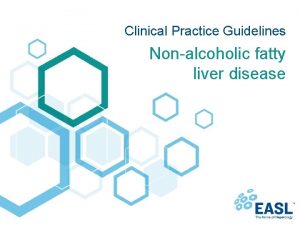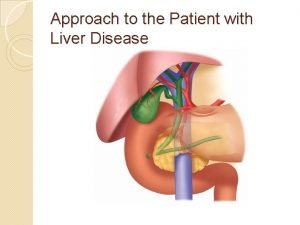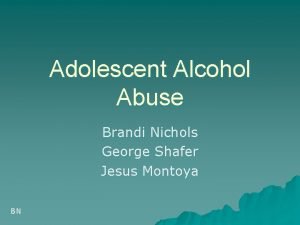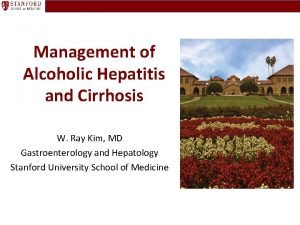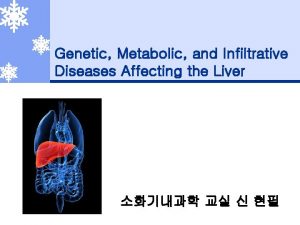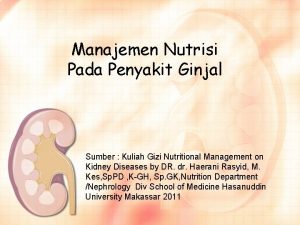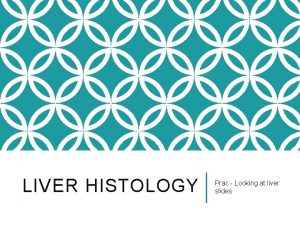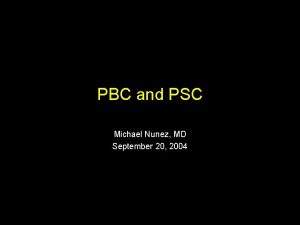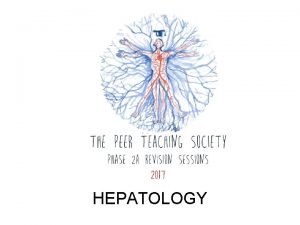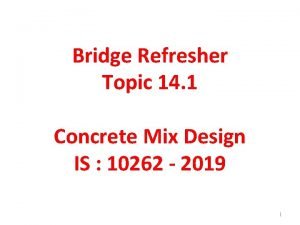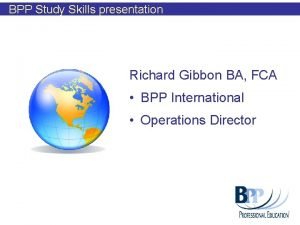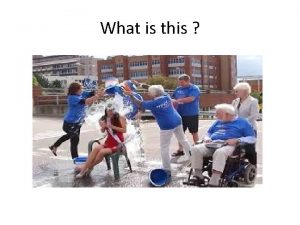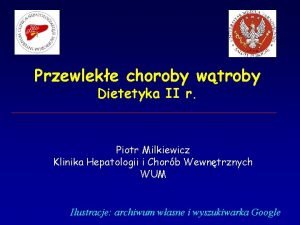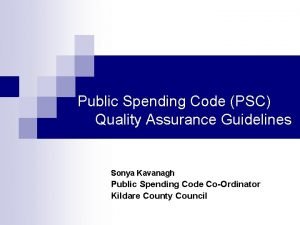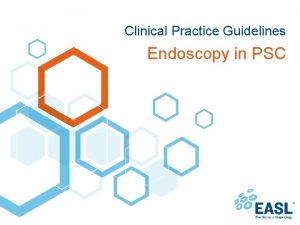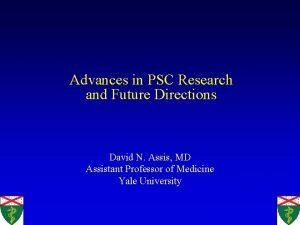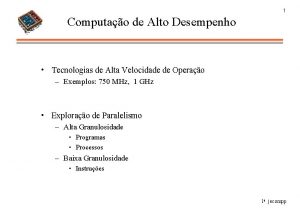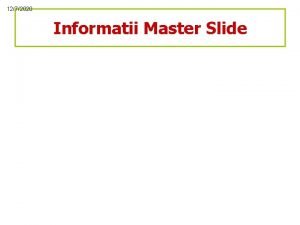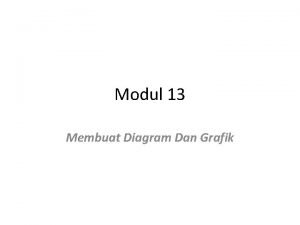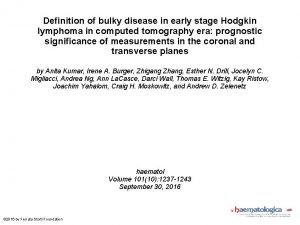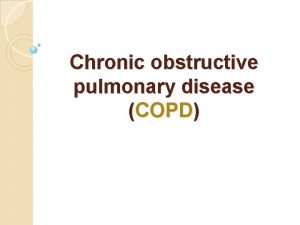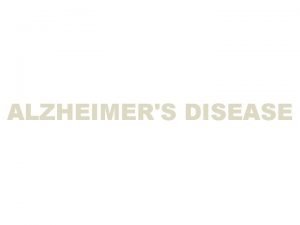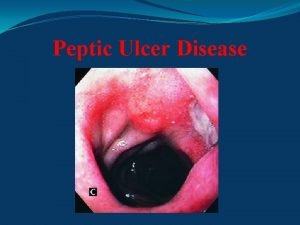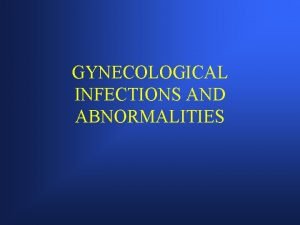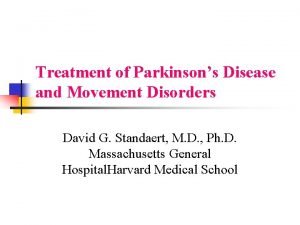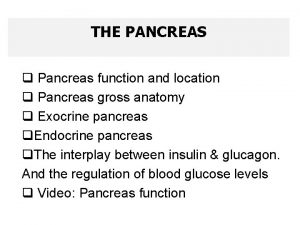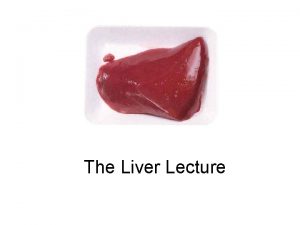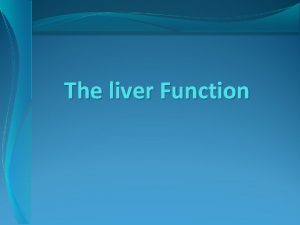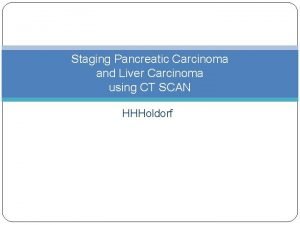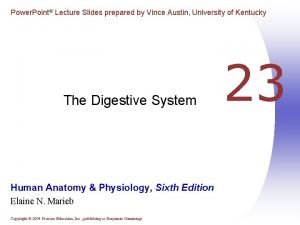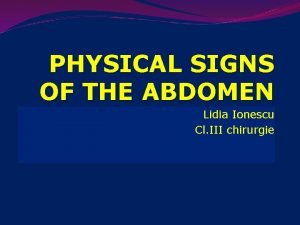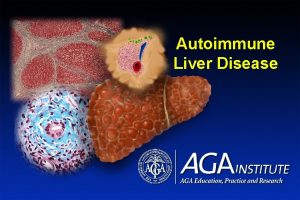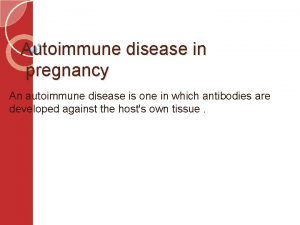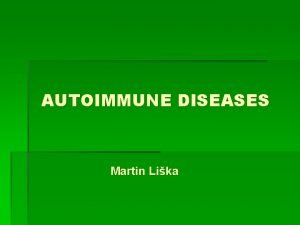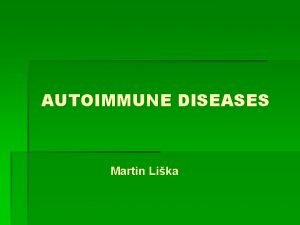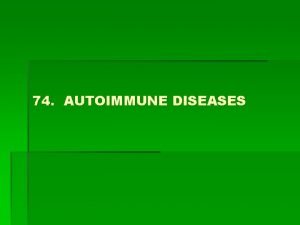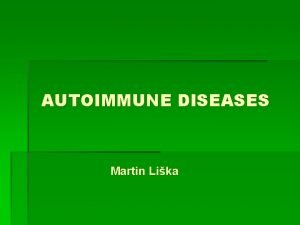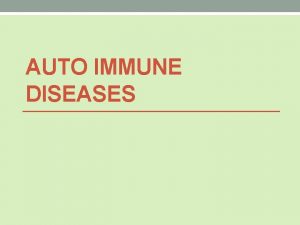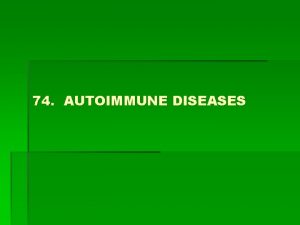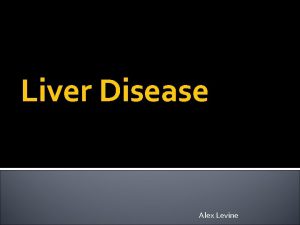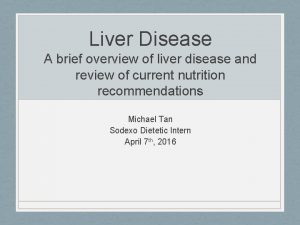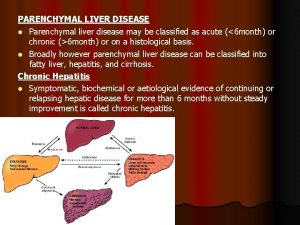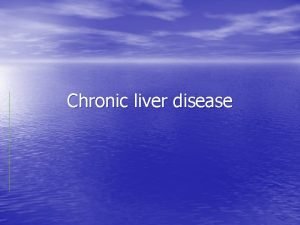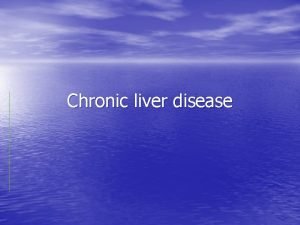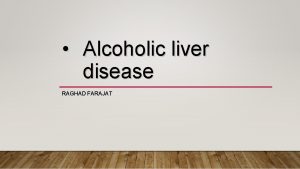Title Slide Autoimmune Liver Disease Definition PSC Primary





































































- Slides: 69

Title Slide Autoimmune Liver Disease

Definition – PSC Primary Sclerosing Cholangitis Definition · Chronic cholestatic liver disease · Unknown etiology, frequently associated with Inflammatory Bowel Disease · Diffuse inflammation and fibrosis of the biliary tree · Leads to biliary cirrhosis and portal hypertension

Etiology Unknown Primary Sclerosing Cholangitis Etiology Unknown · Disordered immunoregulation · T-cell subsets altered · T-cell suppressor function abnormal · Circulating immune complexes · Abnormal complement levels · Infections and bacterial products · Portal bacteremia

Clinical Picture Primary Sclerosing Cholangitis Clinical Picture · Cholestasis (elevated alkaline phosphatase) · Usually in setting of colitis · May be asymptomatic · Abnormal cholangiogram diagnostic

Clinical Presentation Primary Sclerosing Cholangitis Clinical Presentation Asymptomatic Symptomatic Fatigue Pruritus Jaundice Hepatomegaly Abdominal pain Weight loss Splenomegaly Ascending cholangitis Hyperpigmentation Variceal bleeding Ascites 15 - 44% 75 70 30 -69 34 -62 16 -37 10 -34 30 5 -28 25 2 -14 2 -10

Relationship to IBD Primary Sclerosing Cholangitis Relationship to Inflammatory Bowel Disease · IBD in 60 -80% of PSC patients · CUC more common than Crohn’s disease (2: 1) · In PSC, Crohn’s disease almost always involves the colon · 4 -5% of CUC patients have PSC

Primary Sclerosing Cholangitis in Colitis Chronic ulcerative colitis PSC 50/106 2000/106 100/106 (Estimated prevalence)

Diagnostic Criteria Primary Sclerosing Cholangitis Diagnostic Criteria · Typical cholangiographic abnormalities involving any part of the biliary tree · Compatible clinical and biochemical findings · History of IBD, cholestatic symptoms · Two- to three-fold increase in serum alkaline phosphatase level > 6 mos.

Diagnostic Criteria Primary Sclerosing Cholangitis Diagnostic Criteria Exclude: · AIDS cholangiopathy · Bile duct neoplasm (unless previous diagnosis of PSC) · Biliary tract surgery or trauma · Choledocholithiasis · Congenital abnormalities of biliary tract · Caustic treatment of intrahepatic cysts · Ischemic stricturing of bile ducts · Stricturing related to intra-arterial infusion of chemotherapy

Liver Tests Primary Sclerosing Cholangitis Liver Tests · Alkaline phosphatase nearly always elevated · AST and ALT usually <5 times normal · Bilirubin, albumin, prothrombin time usually normal at diagnosis

Prevalence of Autoantibodies in PSC Primary Sclerosing Cholangitis Prevalence of Autoantibodies in PSC p-ANCA 80% AMA <2% ANA 50 -60% SMA 35%

Diagnosis – Cholangiography Primary Sclerosing Cholangitis Diagnosis - Cholangiography · ERCP most commonly used · Percutaneous cholangiography infrequently used · Magnetic resonance cholangiography non-invasive no radiation cost-effective

PSC Involving Intrahepatic Ducts Primary Sclerosing Cholangitis PSC Involving Intrahepatic Ducts

Concentric Fibrosis in PSC Bile duct Concentric fibrosis

Biliary Cirrhosis

Small-Duct PSC Primary Sclerosing Cholangitis Small-Duct PSC · 5% of PSC · Normal cholangiogram but biopsy showing PSC · Can progress to classic PSC · May exist with or without colitis

Differentiating PSC from PBC Primary Sclerosing Cholangitis Differentiating PSC from PBC PSC PBC Cholestasis + + History of colitis + - AMA - + Liver biopsy onion skin fibrosis florid duct lesion Cholangiogram abnormal

Features Used In Prognostic Models Primary Sclerosing Cholangitis Features Used in Prognostic Models Mayo Clinic King’s College Multicenter Swedish New Mayo Model (n=174) (n=126) (n=426) (n=305) (n=405) Age Age Age Bilirubin Hepatomegaly Bilirubin Biopsy Stage AST Hemoglobin Splenomegaly Inflammatory Bowel disease Alkaline Phosphatase Variceal Bleed Albumin

Disease Specific Therapy Primary Sclerosing Cholangitis Disease Specific Therapy · Surgical therapy seldom used · Dilation for dominant strictures · No proven medical therapy

Management of Cholestasis Primary Sclerosing Cholangitis Management of Cholestasis Vitamin Deficiency A 40% D 14% E 2% K Unknown

Management of Cholestasis Primary Sclerosing Cholangitis Management of Cholestasis Metabolic Bone Disease Osteoporosis much more common than osteomalacia · · · Hormone replacement in women Calcium + vitamin D helpful Bisphonates may be helpful Steroid therapy may worsen bone disease Calcitonin not helpful

Management of Cholestasis Primary Sclerosing Cholangitis Management of Cholestasis Steatorrhea · Diminished bile salts in gut · Chronic pancreatitis · Co-existent celiac disease

Management of Biliary Strictures Primary Sclerosing Cholangitis Management of Biliary Stricture · Uncommon · Cytology insensitive Molecular methods being evaluated · Long-term stents may cause problems · Dilatation alone seems preferable

Cancer Risk Primary Sclerosing Cholangitis Cancer Risk Cholangiocarcinoma · Lifetime risk 7 -15% · Incidence 0. 5 to 1% · Smoking and IBD may increase risk Other cancers: pancreatic, liver, and colon

Risk of Colon Cancer in CUC and PSC Primary Sclerosing Cholangitis Risk of Colon Cancer in CUC and PSC Compared to CUC Alone 1. 0 0. 8 Cumulative probability p=0. 0571 0. 6 CUC + PSC 0. 4 CUC alone 0. 2 0 0 1 2 3 4 5 Years Loftus EV et al Gut; 2005: 91 6 7 8 9 10

Liver Transplantation for PSC Primary Sclerosing Cholangitis Liver Transplantation for PSC Survival 1 year 5 years 90 -97% 85 -88% Problems with rejection, infection, recurrence, colon cancer

Treatment Recommendations Primary Sclerosing Cholangitis Treatment Recommendations · No standard medical therapy · Cancer surveillance · Hepatitis A & B vaccination · Antibiotics for cholangitis · Screen for varices · Dilate symptomatic strictures · Assess for osteoporosis and vitamin deficiency in advanced disease

Overview Primary Biliary Cirrhosis Overview · · · · Definition Natural history Clinical features Diagnosis Pathology Management Complications Transplantation

Definition - PBC Primary Biliary Cirrhosis Definition · Chronic cholestatic liver disease · Serum anti-mitochondrial antibody · Non-suppurative destructive cholangitis on liver histology Talwalkar JA, Lindor KD. Lancet 2003

Natural History – PBC Primary Biliary Cirrhosis Natural History: Risk Factors · Female gender · Autoimmune thyroid disease · Prior urinary tract infection · History of previous tonsillectomy · Smoking · Inflammatory skin disease (psoriasis, eczema) · Genetic predisposition Howel D et al, Hepatology 2000 Parikh-Patel A et al, Hepatology 2001

Clinical Features at Presentation – PBC Primary Biliary Cirrhosis Clinical Features at Presentation Asymptomatic 40 -60% Fatigue +++ Pruritus ++ Sicca symptoms +++ Hepatomegaly + Splenomegaly + Jaundice uncommon Xanthelasma uncommon

Fatigue in PBC Primary Biliary Cirrhosis Fatigue in PBC · Most common symptom · Frequency 0 - 80% · No association with age, sex, histological stage, bilirubin, and Mayo Risk score · Etiology unknown Leuschner U. Clin Liv Dis 2003; 7: 741

Biochemical Features of PBC Primary Biliary Cirrhosis Biochemical Features of PBC · Alkaline Phosphatase almost always elevated (generally 3 -4 x normal) · AST, ALT < 200 U/L · Bilirubin - usually rises late · Cholesterol elevated in 85% · Ig. M - commonly elevated

Serum Antibodies in PBC Primary Biliary Cirrhosis Serum Antibodies in PBC Type Prevalence AMA ++++ ANA +++ ASMA ++ Anti-Centromere + Anti-Gp 210 ++ Anti-Sp 100 ++ p-ANCA +

AMA Negative PBC Primary Biliary Cirrhosis AMA-Negative PBC · Occurs in 5%-10% of all cases · No evidence of extrahepatic biliary obstruction · No difference in clinical presentation, natural history and prognosis compared to AMA-positive cases · Response to medical therapy similar to AMApositive individuals · High prevalence of serum ANA

Florid Duct Lesion

Puritus Primary Biliary Cirrhosis Pruritus · Frequency between 20 -60% of cases · Insidious onset · May be intractable · No association with age, sex, histological stage, and Mayo Risk score · Etiology unknown Leuschner U. Clin Liv Dis 2003; 7: 741

Sicca Syndrome Primary Biliary Cirrhosis Sicca Syndrome · Present in up to 70% · Keratoconjunctivitis and xerostomia are most common symptoms · Therapies include · increased fluid intake · oral sialogogues · artificial tears · vaginal lubricants

Xanthomata Primary Biliary Cirrhosis Xanthomata · Frequency: 15 - 50% · Involve extensor tendon surfaces · Xanthelasma affects eyelids · Associated with elevated serum cholesterol levels · May resolve with disease progression or with UDCA therapy Talwalkar J, et al. Clin Gastro Hepatol 2003

Asymptomatic Disease – PBC Primary Biliary Cirrhosis Asymptomatic Disease · Frequency: 13 - 61% · Increasingly common · Asymptomatic phase may last up to 10 years · Liver tests and autoantibody profiles same as for symptomatic patients

Potential Mechanisms for the Development of PBC · Microorganism infection · Xenobiotics · Genetic · Apoptosis

Extrahepatic Autoimmune Diseases Primary Biliary Cirrhosis Extrahepatic Autoimmune Diseases (%) Sicca syndrome 70 Thyroid disease 40 Arthritis 20 Scleroderma 15 Raynaud’s phenomenon 10 CREST syndrome 5 Talwalkar JA, Lindor KD. Zakim/Boyer, 2005

Metabolic Bone Disease: Osteopenia, Osteoporosis, and Osteomalacia Primary Biliary Cirrhosis Metabolic Bone Disease: Osteopenia, Osteoporosis, and Osteomalacia · Etiology related to cholestasis · Frequency · osteopenia: 0% - 50% · osteoporosis: 0% - 20% · osteomalacia: 0% - 5% · Risk factors include age, low body weight, smoking, and advanced histological stage · Independent of menopausal status Leuschner U. Clin Liv Dis 2003; 7: 741 -58

Management of Metabolic Bone Disease Primary Biliary Cirrhosis Management of Metabolic Bone Disease Osteoporosis much more common than osteomalacia · · · Hormone replacement in women Calcium + vitamin D helpful Bisphonates may be helpful Steroid therapy may worsen bone disease Calcitonin not helpful

Portal Hypertension – PBC Primary Biliary Cirrhosis Portal Hypertension · Most common in cirrhotics · Esophageal varices from presinusoidal causes in some · Serum albumin, bilirubin, and platelet count are independent predictors of esophageal varices · Clinical outcomes similar to other liver diseases Leuschner U. Clin Liv Dis 2003; 7: 741 -58

Management of PBC Primary Biliary Cirrhosis Management of PBC Evaluation Interval Clinical visit 6 -12 months Serum liver tests 3 -6 months Sensitive TSH Yearly Lipid profile Yearly Bone density Diagnosis, 2 years Vitamin levels If total bilirubin elevated Talwalkar JA, Lindor KD. Therapy of Dig Dis (in press)

Medical Management Primary Biliary Cirrhosis Medical Management Unsuccessful Questionable Useful penicillamine steroids UDCA cyclosporine colchicine azathioprine methotrexate thalidomide malotilate chlorambucil

Actions of Ursodeoxycholic Acid Primary Biliary Cirrhosis Actions of Ursodeoxycholic Acid · Protects against cytotoxic effects of di-hydroxy bile acids · Modulates expression of HLA · Stabilizes bile canalicular membrane · Choleretic effect · Decreased apoptosis · Decreased cytokine production

Comparison of Prognostic Models - PBC Primary Biliary Cirrhosis Comparison of Prognostic Models Yale European Mayo Oslo Glasgow Australia Age Age Variceal bleeding Age Bilirubin Bilirubin Hepatomegaly Albumin Ascites Albumin Fibrosis Cirrhosis bleeding Prothrombin Variceal time Cirrhosis Cholestasis Edema Fibrosis bodies Wiesner, Mayo Clin Proc 1998; 73(6): 575 Mallory

Overview – AIH Autoimmune Hepatitis Overview · Definition · Clinical picture · Diagnosis · Pathology · Management · Complications · Transplantation

Autoimmune Hepatitis Intermittently progressive inflammatory liver disease of presumed autoimmune etiology · High gamma globulins, autoantibodies · Predominately periportal hepatitis · Usually responds favorably to corticosteroids

Clinical Features Autoimmune Hepatitis Clinical Features · Middle-aged (or teenage) woman, non-drinker without viral hepatitis · Fatigue, arthralgias/myalgias, oligomenorrhea, jaundice · Increased ALT, AST, gamma globulins · Positive ANA and SMA · Interface hepatitis with lymphoplasmacytic infiltrate · Responds to corticosteroids

Auto-Antibodies in AIH Autoimmune Hepatitis Auto-Antibodies in AIH Antibody Target Antigens Prevalence Other Disease ANA Multiple nuclear proteins 60 -80% PBC, PSC, HCV, NAFLD SMA Actin 60 -80% HCV, NAFLD, Acute viral hepatitis p. ANCA Lactoferrin, Other unknown Ag 65 -90% PSC, PBC LKM-1 CYP 2 D 6 ≈ 4% HCV SLA/LP UGA repressor t. RNA-associated protein 10 -30% HCV

Autoimmune Hepatitis Sub-Types of Autoimmune Hepatitis Type 1 Type 2 Age at Presentation Any age Predominantly children Female: Male 4: 1 8: 1 Ig G Levels Elevated Ig. G Variable Ig G Ig A Levels Normal +/- Low Ig. A Auto-antibodies ANA, SMA LKM-1 Cirrhosis at 3 yrs ~ 40% ~ 80%

Portal Tract Inflammation Histology Plasma cells Plasma cell cluster; occasional eosinophils

Spotty Necrosis Plasma cells in foci of spotty necrosis

Plasma Cell Interface Activity and Hepatitic Rosettes Plasma cell interface activity Hepatitic rosette

Recognition and Diagnosis of AIH Autoimmune Hepatitis Recognition and Diagnosis of AIH · Should be considered in patient with elevated AST/ALT or cirrhosis of uncertain etiology · ANA, SMA and other autoantibody tests are poor “screening tests” · The diagnosis of AIH must be based on a constellation of findings · A diagnosis of AIH is often a “work in progress”


International Autoimmune Hepatitis Group Scoring System: Patient History Autoimmune Hepatitis International Autoimmune Hepatitis Group Scoring System: Patient History Favor AIH Favor other diagnosis (points) Gender Female (+2) Male (0) Alcohol < 25 g/d (+2) > 60 g/d (– 2) Hepatotoxic drugs None (+1) Present (-4) Other autoimmune diseases Present (+2) None (0)

International Autoimmune Hepatitis Group Scoring System: Biochemistries Autoimmune Hepatitis International Autoimmune Hepatitis Group Scoring System: Biochemistries Favor AIH (points) Favor other diagnosis (points) Alkaline phosphatase < 1. 5 (+2) elevation: ALT elevation Serum globulins, globulin or Ig. G > 2 x normal (+3) >1. 5 -2 x normal (+2) > 1 -1. 5 x normal (+1) > 3. 0 (-2) Normal (0)

International Autoimmune Hepatitis Group Scoring System: Serologies Autoimmune Hepatitis International Autoimmune Hepatitis Group Scoring System: Serologies Favor AIH (points) Favor other diagnosis (points) > 1: 80 (+3) 1: 80 (+2) 1: 40 (+1) < 1: 40 (0) AMA Negative (0) Positive (-4) Hepatitis Markers Negative (+3) Positive (-3) Other autoantibodies Present (+2) Absent (0) Present (+1) Absent (0) ANA, SMA or LKM-1 HLA-DR 3 or DR 4

International Autoimmune Hepatitis Group Scoring System: Histology Autoimmune Hepatitis International Autoimmune Hepatitis Group Scoring System: Histology Favor AIH Favor other diagnosis (points) Interface Hepatitis +3 Lymphoplasmacytic Infiltrate +1 Rosetting of liver cells None of Above Biliary Changes Other changes +1 -5 -3 -3

International Autoimmune Hepatitis Group Scoring System: Response to Therapy Autoimmune Hepatitis International Autoimmune Hepatitis Group Scoring System: Response to Therapy Favor AIH (points) Complete Remission (normal ALT, Ig. G, +2 bilirubin within 12 mo and for >6 month duration or: all tests > 50% improved in 1 mo. and AST/ALT < 2 x normal within 6 mos. or: liver biopsy with minimal activity) Remission with relapse (return of symptoms, abnormal biopsy and /or > 2 x normal AST/ALT) +3

Interpretation of International Autoimmune Hepatitis Group Score Autoimmune Hepatitis - Criteria Interpretation of International Autoimmune Hepatitis Group Score Interpretation >15 Definite AIH 10 -15 Probable AIH Pre-therapy: Post-therapy: >17 Definite AIH 12 -17 Probable AIH

Autoimmune Hepatitis Indications for Treatment Based on the results of Indications for Treatment Absolute Relative None AST 10 x normal Symptoms No symptoms AST 5 x normal and -globulin 2 x normal AST < 5 x normal -globulin < 2 x normal Inactive cirrhosis Bridging necrosis Interface hepatitis Portal hepatitis AASLD Practice Guidelines, Hepatology 2002, 36: 479

Therapy in Adults Autoimmune Hepatitis Therapy in Adults Combination Therapy Monotherapy Interval Prednisone Azathrioprine mg/d Week 1 60 30 50 Week 2 40 20 50 Week 3 30 15 50 Week 4 30 15 50 Daily until endpoint 20 10 50 AASLD Practice Guidelines, Hepatology 2002, 36: 479

Autoimmune Hepatitis Reasons for Selecting Treatment Regimens Prednisone Monotherapy Combination (Pred+Aza) · Severe cytopenia · Postmenopausal state · TPMT deficiency · Osteoporosis · Prior Aza intolerance · Brittle diabetes · Pregnancy · Obesity · Malignancy · Acne · Emotional lability · Hypertension AASLD Practice Guidelines, Hepatology 2002, 36: 479

Liver Transplantation Autoimmune Hepatitis Liver Transplantation · Overall 5 -year survival rates 80 -90% · Increased frequency of acute allograft rejection · AIH recurrence in 30 -40% · Surveillance liver biopsies may be warranted · Manage with corticosteroids
 Cupping and autoimmune disease
Cupping and autoimmune disease Preload and afterload
Preload and afterload Simtuzumab
Simtuzumab Heel and toe polka steps
Heel and toe polka steps Decompensated liver disease
Decompensated liver disease Stigmata of chronic liver disease
Stigmata of chronic liver disease Complication of liver cirrhosis
Complication of liver cirrhosis Non-alcoholic fatty liver disease (nafld)
Non-alcoholic fatty liver disease (nafld) Cld chronic liver disease
Cld chronic liver disease Stigmata of chronic liver disease
Stigmata of chronic liver disease Stigmata of chronic liver disease
Stigmata of chronic liver disease Portal hypertension symptoms and signs
Portal hypertension symptoms and signs Stage 1 cirrhosis
Stage 1 cirrhosis Gennifer shafer liver disease
Gennifer shafer liver disease Alcoholic liver disease
Alcoholic liver disease Infiltrative liver disease
Infiltrative liver disease Penyebab pew pada ckd
Penyebab pew pada ckd Crohn's disease classification
Crohn's disease classification Liver histology slide
Liver histology slide What is the primary function of the liver
What is the primary function of the liver Communicable disease and non communicable disease
Communicable disease and non communicable disease Psc tracker
Psc tracker Psc-cuny welfare fund retirees
Psc-cuny welfare fund retirees Cholangiography factory
Cholangiography factory Psc talent pool
Psc talent pool Phases of chronic hepatitis b
Phases of chronic hepatitis b Cuny welfare fund
Cuny welfare fund Psc sleeper dimensions
Psc sleeper dimensions Concrete grade ratio table
Concrete grade ratio table Psc-17 scoring
Psc-17 scoring Phylogense
Phylogense 10wc activity tracker
10wc activity tracker Cbc 18
Cbc 18 Office management assistant psc
Office management assistant psc Ceftrioxone
Ceftrioxone Psc
Psc Psc 1501 portfolio example
Psc 1501 portfolio example Psc group llc
Psc group llc Management support officer psc
Management support officer psc Psc assurance
Psc assurance Primary sclerosing cholangitis
Primary sclerosing cholangitis Hisd psc
Hisd psc Psc 01
Psc 01 Pżw poszerzony przyczyny
Pżw poszerzony przyczyny Easl guidelines psc
Easl guidelines psc Nor urso psc
Nor urso psc Psc desempenho individual
Psc desempenho individual Prefatory elements in proposal exclude
Prefatory elements in proposal exclude Title title
Title title What is title slide in hindi
What is title slide in hindi What is the purpose of a title slide
What is the purpose of a title slide What is a slide title master pair
What is a slide title master pair Slide and divide steps
Slide and divide steps Primary vertical axis title
Primary vertical axis title The primary pigment colors are ____.
The primary pigment colors are ____. Periradicular diseases
Periradicular diseases Bulky desease
Bulky desease Pulmonary disease definition
Pulmonary disease definition Alzheimer disease definition
Alzheimer disease definition Gastric ulcer vs duodenal ulcer
Gastric ulcer vs duodenal ulcer Pid discharge pictures
Pid discharge pictures Parkinson's disease definition
Parkinson's disease definition Heterogeneous hypoechoic lesion in liver
Heterogeneous hypoechoic lesion in liver Location of the pancrease
Location of the pancrease Where is bile secreted
Where is bile secreted Test for gilbert syndrome
Test for gilbert syndrome Liver exercises great gatsby
Liver exercises great gatsby Normal size of liver
Normal size of liver Microscopic anatomy of liver
Microscopic anatomy of liver Cl signs
Cl signs
